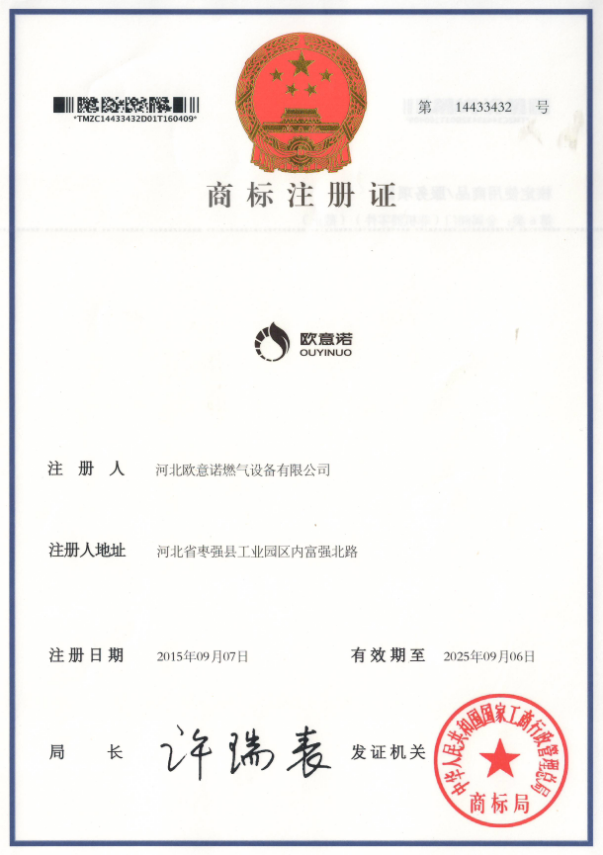
Nov . 14, 2024 17:59
Back to list
gas safety relief valve
Understanding Gas Safety Relief Valves Essential for Industrial Safety
Gas safety relief valves are critical components in various industrial processes. These valves play a pivotal role in maintaining safety and operational efficiency by preventing excessive pressure build-up within gas systems. Understanding their function, types, and maintenance can significantly enhance safety protocols in facilities that handle gas systems.
What is a Gas Safety Relief Valve?
A gas safety relief valve is a safety device designed to protect pressurized equipment and pipelines from overpressure conditions. In the event that pressure exceeds a predetermined limit, the valve opens, allowing gas to escape and thereby preventing potential explosions or catastrophic failures. These valves are commonly employed in various settings, including natural gas systems, chemical processing plants, and oil refineries.
How Do Gas Safety Relief Valves Work?
The operation of a gas safety relief valve is straightforward but critical. Each valve is set to a specific pressure threshold, known as the set point. When the internal pressure of the system reaches this set point, the valve lifts, allowing gases to vent safely into the atmosphere. Once the pressure decreases to an acceptable level, the valve reseals, returning the system to normal operation. The quick response of these valves is essential in preventing pressure-related accidents, which can lead to serious injuries and significant property damage.
Types of Gas Safety Relief Valves
There are several types of gas safety relief valves, each suited for specific applications
1. Spring-Loaded Relief Valves These are the most common types and use a spring mechanism to hold the valve closed until the set pressure is reached. They are reliable and widely used in various industries.
gas safety relief valve

2. Pilot-Operated Relief Valves These valves are typically used in larger systems and can handle higher flow rates. They utilize a pilot valve to control the primary valve's operation, allowing for more precise pressure control.
3. Low-Pressure Relief Valves Designed for applications with lower pressure requirements, these valves are essential in systems where conventional high-pressure valves may not be appropriate.
4. Safety Relief Valves These valves are specifically designed to vent gases and are often found in systems that deal with combustible gases, ensuring that pressure is controlled in potentially hazardous environments.
Importance of Maintenance
Regular maintenance of gas safety relief valves is crucial for ensuring their proper function. Over time, these valves can accumulate dirt, corrosion, or mechanical wear, which may hinder their performance. Routine inspections should include checking for leaks, ensuring the set pressure is accurate, and testing the valve's operation under controlled conditions. Failure to maintain these valves can lead to undetected pressure issues, increasing the risk of accidents.
Regulatory Compliance
In many countries, regulations mandate the installation and maintenance of gas safety relief valves in specific industries. Compliance with these regulations is not only crucial for legal adherence but also vital for ensuring the safety of personnel and the surrounding environment. Organizations should keep abreast of local and national standards to maintain operational integrity.
Conclusion
Gas safety relief valves are indispensable in safeguarding industrial systems that handle pressurized gases. Their ability to prevent excessive pressure build-up is essential for protecting both facilities and personnel from potential hazards. By understanding how these valves operate, the different types available, and the importance of regular maintenance, industries can significantly enhance their safety protocols and mitigate risks associated with gas pressure systems. Investing in proper safety measures not only complies with regulations but also promotes a culture of safety that can benefit the entire organization.
Latest news
-
Safety Valve Spring-Loaded Design Overpressure ProtectionNewsJul.25,2025
-
Precision Voltage Regulator AC5 Accuracy Grade PerformanceNewsJul.25,2025
-
Natural Gas Pressure Regulating Skid Industrial Pipeline ApplicationsNewsJul.25,2025
-
Natural Gas Filter Stainless Steel Mesh Element DesignNewsJul.25,2025
-
Gas Pressure Regulator Valve Direct-Acting Spring-Loaded DesignNewsJul.25,2025
-
Decompression Equipment Multi-Stage Heat Exchange System DesignNewsJul.25,2025

